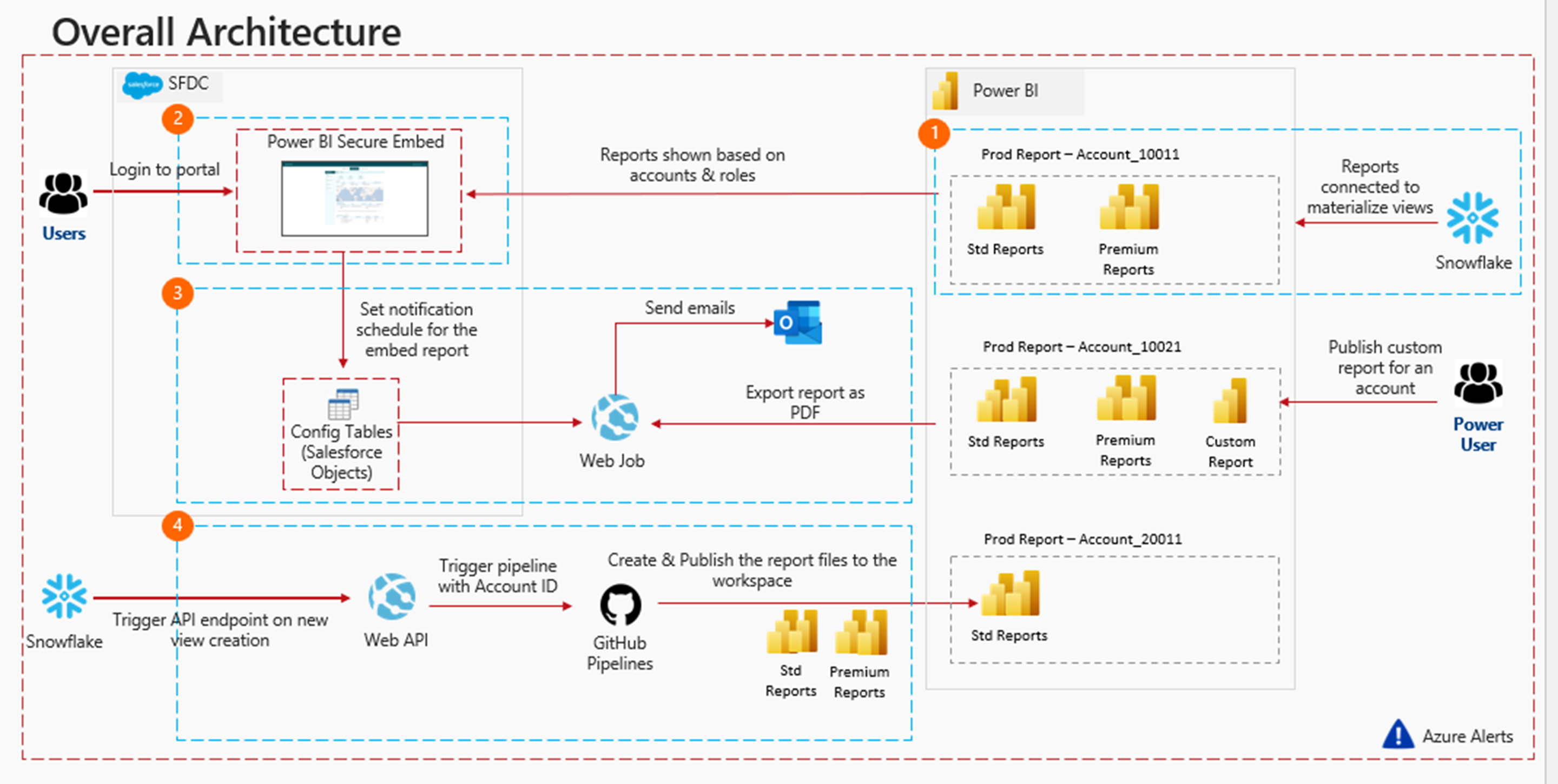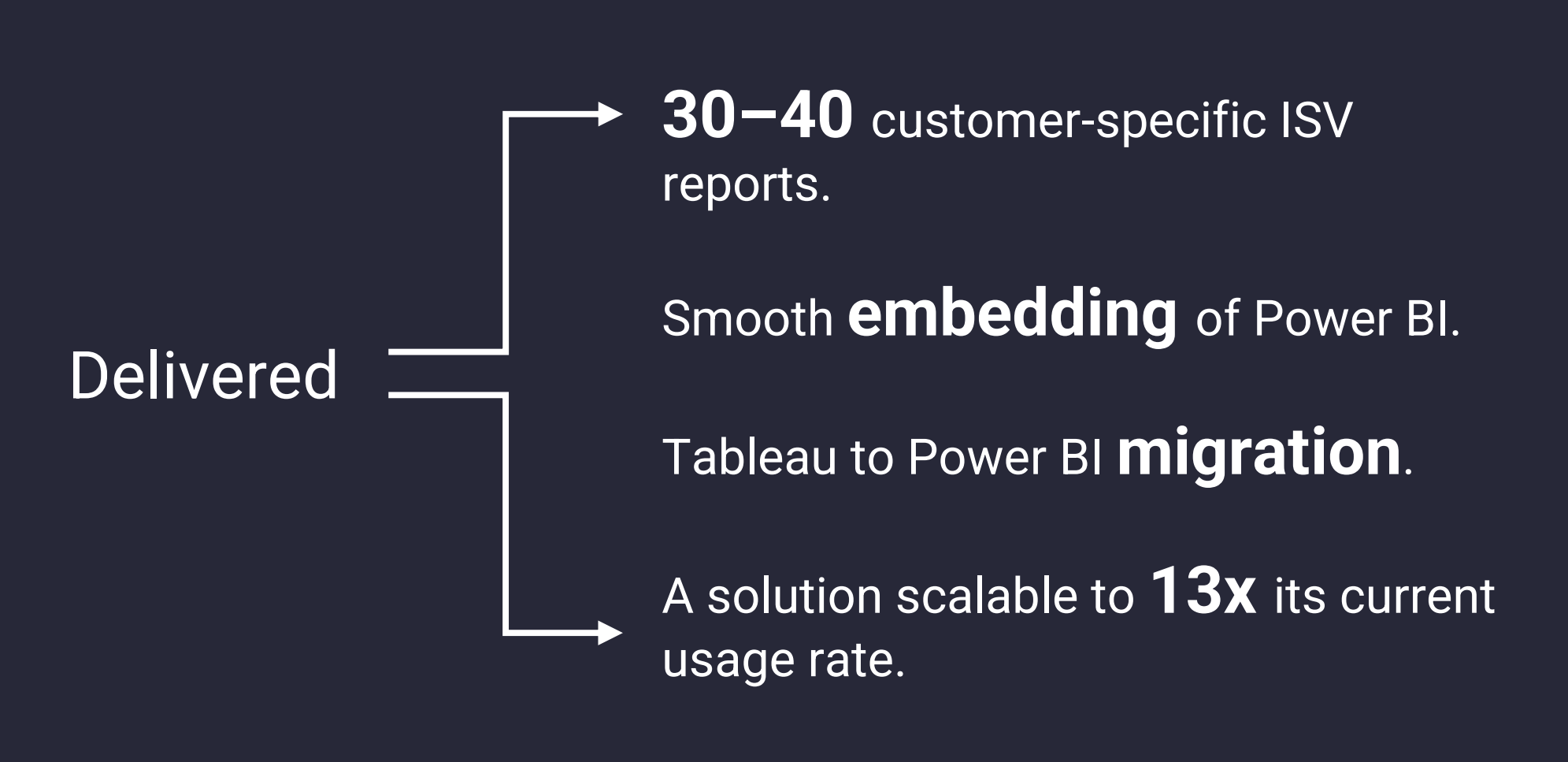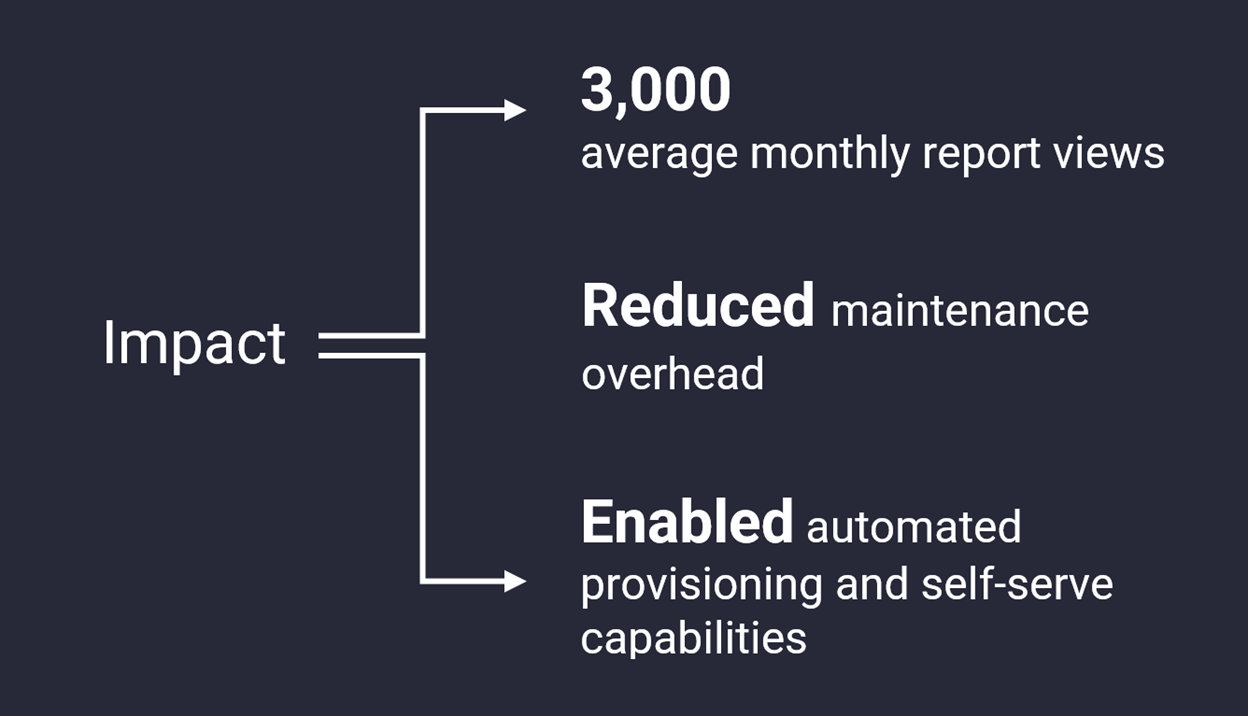Need for a transformation
The ask
· Embed a reporting solution (Power BI) in their Salesforce portal; can scale to support 500 ISV customers (approximately 13 times the current usage).
· Migrate the current Tableau solution to Power BI.
· Integrate the solution with the backend for data refresh.
· Automate new customer provisioning.
· Deploy templatized reports for new customers while ensuring that only relevant information is displayed and that security is maintained.
· Enable self-service capability for ISV customers.
 |
| Figure 1: Solution Architecture |
Tackling the task
To address the client's requirements, we performed an assessment and proposed an architecture that aligned with their business and technical needs. The team also had multiple calls with their Salesforce, Snowflake, and Power BI teams to further define the architecture and ensure seamless integration.Communication is key
Throughout the span of the project, communication was an integral element between MAQ Software and the client. Effective communication was instrumental in identifying dependencies early in the development cycle and proved to be even more crucial when roadblocks were encountered. One such challenge occurred during the implementation phase when the backend Snowflake framework moved to a new version (v2). Our team swiftly addressed customer concerns and proposed a plan to move forward. By evaluating the changes, we were able to adapt and update the reporting solution data model, keeping on track with our delivery of a stellar solution. |
| Figure 2: Delivered Items |
The solution and outcome
Ultimately, our final solution included a Salesforce embedded component to securely show Power BI reports, around 30-40 customer-specific ISV reports, an automated customer provisioning pipeline to set up reports/workspaces and deploy template reports, an automated release pipeline to deploy new features to all customers, and a subscription solution to configure and send report subscription emails to users in PDF/PPT formats.By embedding Power BI into their reporting solution, our client
was able to significantly enhance their customer support experience, providing
an intuitive, real-time view of their customers' network performance and
reducing the maintenance overhead. The new solution streamlined their reporting
process, reduced turnaround time for report creation, and provided an
exceptional user experience for both customers and internal users.
 |
| Figure 3: Impact |

